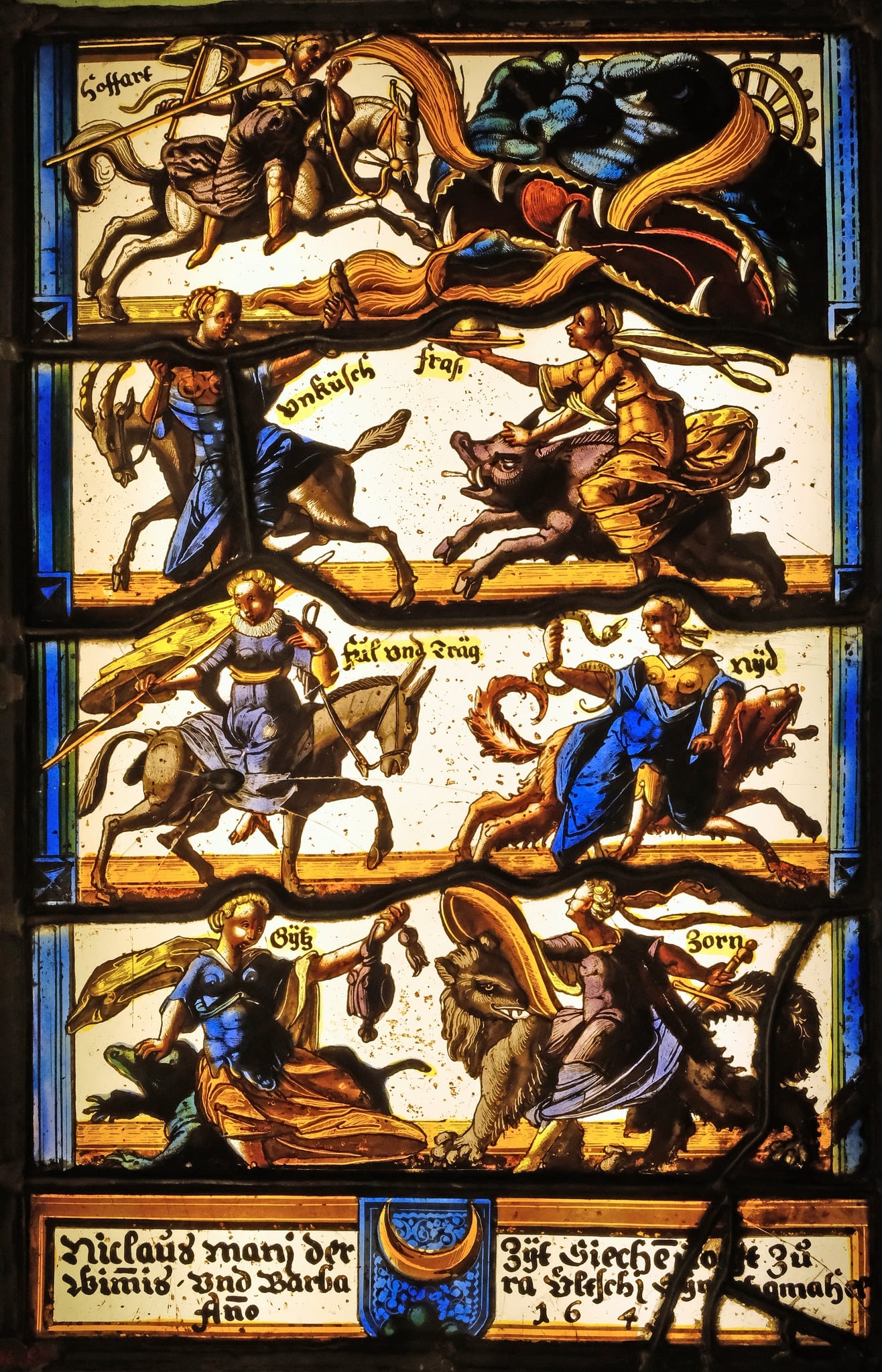Symbolic representations of human vices are depicted in four horizontal bands. The vices take a female form and are mounted on a variety of beasts. At the top is Pride who rides a magnificent horse and charges towards the jaws of hell. Hell is a fabulous beast, a blue reptilian head with a maw lined with teeth, exuding orange-colored flames. On the next level, Luxuria, sexual depravity, rides a goat, a traditional symbol of lust. She is dressed in blue but is bare breasted and holds a parrot in her outstretched left hand. She turns to look behind her to see Gluttony riding a pig. Gluttony is dressed in yellow and holds out a platter of food. The two vices bear similarities as both corrupt natural desires, which, used with moderation, are essential to life. Food and sexual activity ensure the continuation of the individual and of the species. Below, Sloth rides on a donkey. Clothed in a light blue dress she wears a white ruff at her neck and holds a yellow banner resting on her shoulder. She is upright and her pose is placid compared to those of her sisters. Envy is more active; wearing a deep blue robe she holds a writhing snake and rides a bear. Below, Greed appears on a tortoise. She wears a blue tight-fitting garment over chest and upper hips and holds a purse in her left hand. To her right, Wrath sits on a great bear, who turns his head and shows his teeth. She is armed with a sword and shield. The panel links vices of similar types, lust and gluttony are motivated by pleasure sought by the flesh; sloth and envy link inactivity to a concomitant desired for the goods that others have earned; and avarice is associated with wrath, suggesting that the desire to hoard for the self is supported by aggression to defend such uncharitable actions. At the bottom of the panel a horizontal inscription flanks a coat of arms in the center. An inscription panel at the bottom is divided by a coat of arms in the center.
46A122(MANI) · armoiries, héraldique (MANI)
46A122(UELTSCHI) · armoiries, héraldique (UELTSCHI)
55CC11(+4) · Avidité, Convoitise, Cupidité; 'Cupidità' (Ripa) (+ représentation emblématique d'un concept)
Azure a triple mount vert below a crescent or (Mani)
Hoffart/ Unküsch frass/ Ful und Träg Nyd/ Gӱtz [Gier] Zorn/ (Pride/ Luxuria Gluttony/ Sloth Envy / Greed Anger)
Niclaus manj der Zÿt Sieche vogt Zu/ wimis und Barbara Ultschj Syn[ .. ]hgmahel/ Ano 164[.] (Below. Niklaus Mani, the present bailiff of the infirmary of Wimmis und Barbara Ueltschi, his wife, the Year 164?)
none
